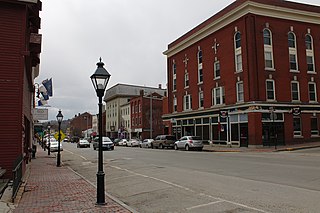
Hallowell is a city in Kennebec County, Maine, United States. The population was 2,570 at the 2020 census. Popular with tourists, Hallowell is noted for its culture and old architecture. Hallowell is included in the Augusta, Maine, micropolitan New England City and Town Area.

Carrère and Hastings, the firm of John Merven Carrère and Thomas Hastings, was one of the outstanding American Beaux-Arts architecture firms. Located in New York City, the firm practiced from 1885 until 1929, although Carrère died in an automobile accident in 1911.

The Maine State House in Augusta, Maine, is the state capitol of the State of Maine. The building was completed in 1832, one year after Augusta became the capital of Maine. Built using Maine granite, the State House was based on the design of the Massachusetts State House.

Merrill Auditorium is a 1,908-seat auditorium located in Portland, Maine, United States. Originally known as Portland City Hall Auditorium, it is located in the eastern section of Portland City Hall.

The Edward T. Gignoux U.S. Courthouse is a historic courthouse building at 156 Federal Street in Portland, Maine. It is the courthouse for the United States District Court for the District of Maine.
Portland, Maine, is home to many neighborhoods.
Monument Square is a town square in downtown Portland, Maine, about halfway between the East Bayside and Old Port neighborhoods. The Time and Temperature Building, Fidelity Trust Building, and the main branch of the Portland Public Library are on Congress Street, across from the square, while One Monument Square and One City Center are among the buildings on the square itself.
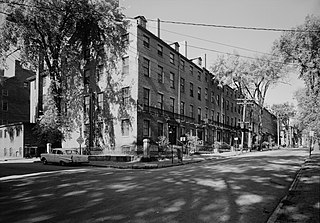
The Park Street Row, also known as Park Street Block, is a set of historic rowhouses at 88–114 Park Street, in Portland, Maine. Built in 1835, it is the largest known 19th-century rowhouse in the state, and is a local example of Greek Revival architecture. It was added to the National Register of Historic Places in 1972.

Mechanics' Hall is a historic building and meeting space at 519 Congress Street in downtown Portland, Maine. It was listed on the National Register of Historic Places (NRHP) in 1973 and additional NRHP documentation asserting national significance of the building was approved in 2022. Built in 1857-59 by and for the members of the Maine Charitable Mechanic Association, it is a well-preserved example of Italianate architecture executed in brick and stone, and a landmark of Portland's downtown business and arts district. The building, still owned by MCMA, houses the association's library. The Maine Charitable Mechanic Association was founded in 1815 as a social organization that promoted and supported the skilled trades and their practitioners. Its original members were master craftspeople and entrepreneurs and their apprentices.
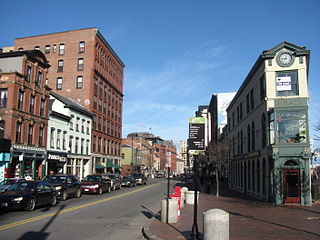
Congress Street is the main street in Portland, Maine. Around 5.77 miles (9.29 km) long, it stretches from County Road, Portland's southwestern border with Westbrook, through a number of neighborhoods before ending overlooking the Eastern Promenade on Munjoy Hill. In March 2009, the Portland City Council designated much of the inner portion of Congress Street a historic district. The western section of the street includes the city's Arts District.
The following is a timeline of the history of the city of Portland, Maine, USA.

The State of Maine Armory is an historic building in Portland, Maine's Old Port District. The brick building spans from its entrance at 20 Milk Street to Fore Street at its rear and parallels Market Street and Silver Street on its west and east sides. The historic Boothby Square is located on Fore Street behind the hotel.
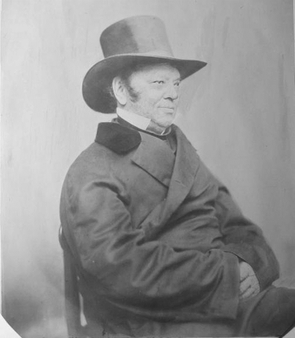
Charles Quincy Clapp was a prominent American merchant and architect in Portland, Maine. He was active in the first half of the 19th century.
George Munjoy was an early settler in what was Falmouth, Province of Maine. Munjoy Hill, in today's Portland, Maine, is named for him, as was Peaks Island for a period.
George Burnham was an American architect from Portland, Maine. He was active in the second half of the 20th century and first half of the 21st century.
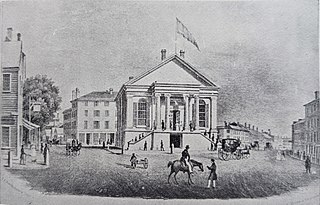
The Old City Hall of Portland, Maine, was located in what was then known as Market Square or Haymarket Square between 1833 and 1888, when it was demolished. In 1862, it was replaced by an earlier version of the City Hall located today on Congress Street, a short distance northeast of the original location.

High Street is a downtown street in Portland, Maine, United States. It runs one-way for around 0.81 miles (1.30 km), from Commercial Street in the southeast to Forest Avenue in the northwest. It is one of the three main routes crossing the Portland peninsula in this direction, the other two being State Street and Franklin Street. Part of the street passes through the Spring Street Historic District and the city's Arts District.
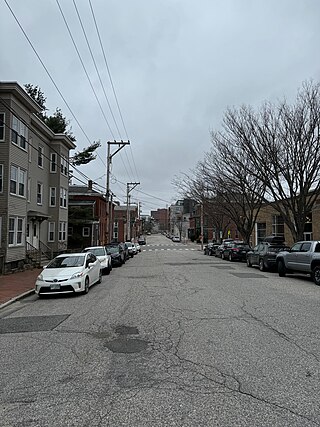
Federal Street is a historic downtown street in Portland, Maine, United States. It runs for around 0.56 miles (0.90 km), from Monument Way, in Monument Square, in the southwest to Mountfort Street, at the foot of Munjoy Hill, in the northeast. Its middle section was wiped out by the widening of Franklin Street in 1967.
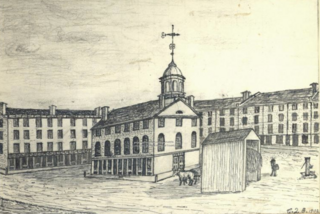
The United States Hotel was a hotel in Portland, Maine. At the time of its closure, in 1900, it was one of the oldest hotels in the city, having been in business for 97 years. The hotel stood on Federal Street, behind Market House, in what was then known as Haymarket Square. Built in 1803 as the Washington Hotel, it was later renamed the Cumberland Hotel. It was renamed again, around 1829, to the Portland House, then the Cumberland House in 1835.

The Market House of Portland, Maine, was located in what was then known as Market Square or Haymarket Square between 1825 and 1888, when it was demolished. In 1833, the building was modified to become Portland's first city hall. The Soldiers' and Sailors' Monument, which now stands in its place, was dedicated in 1891.




















